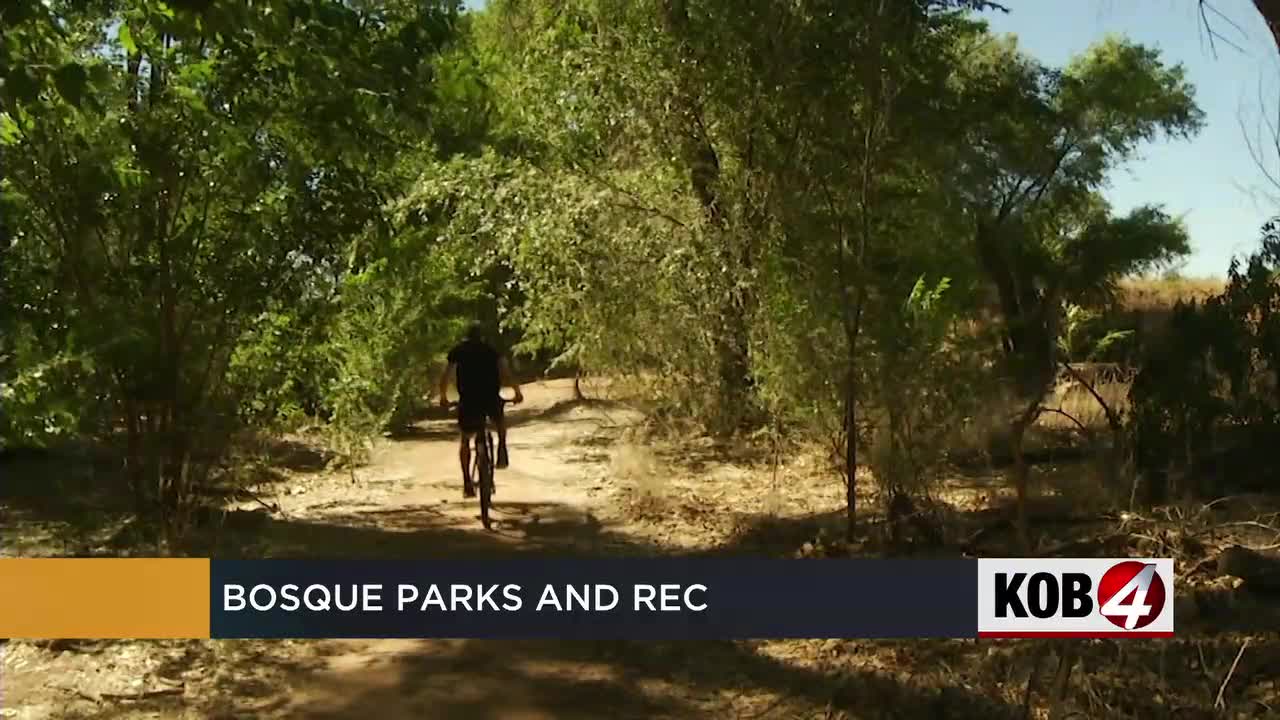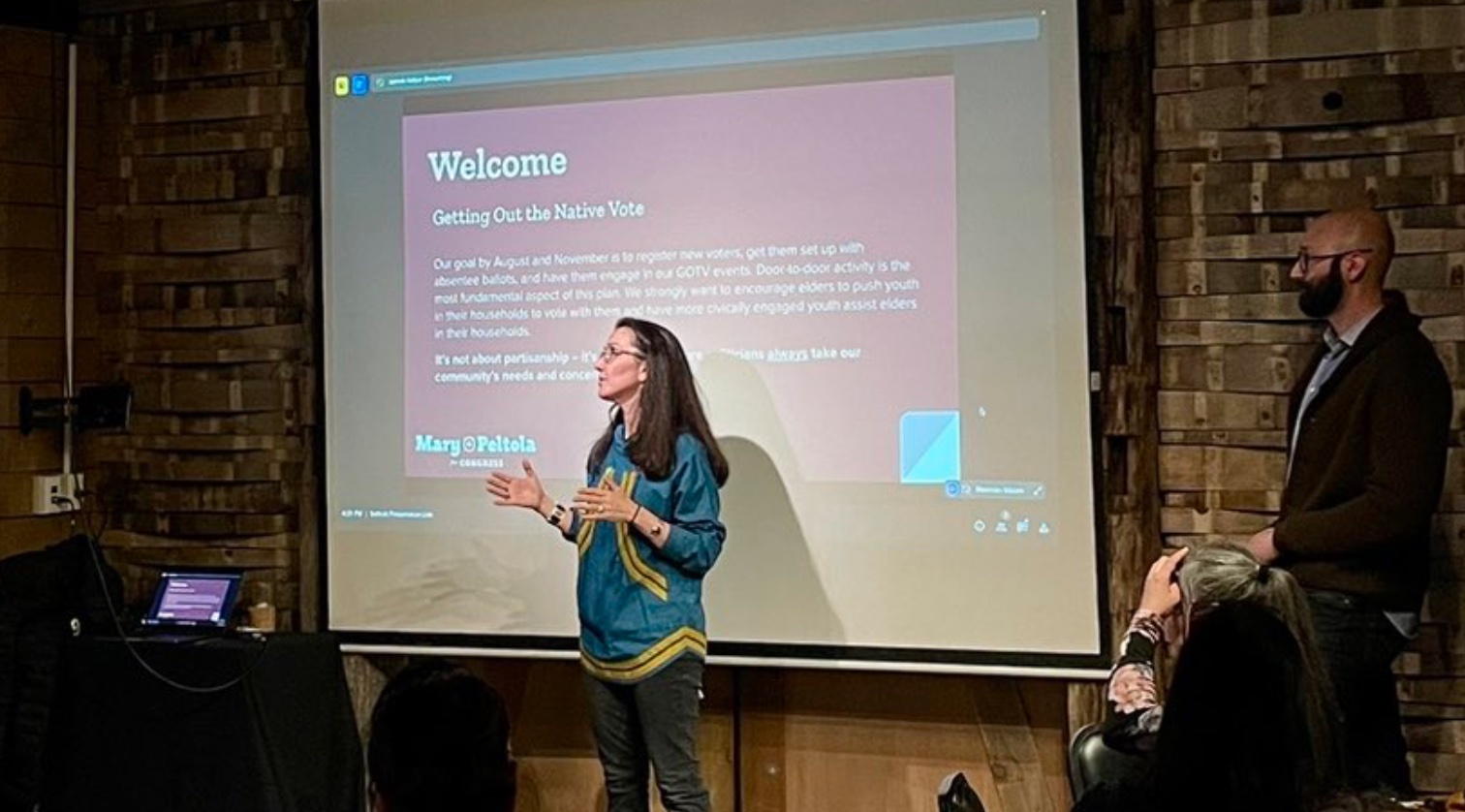New Mexico
Migratory birds are moving through New Mexico. Here’s what you can do to help them thrive.
Birds of different sizes, colors and species flock through New Mexico as they migrate for the season. New Mexicans may catch a glimpse of some in their backyard without being aware of the impact these feathered aviators have on our ecosystem, and in turn, our impact on their ability to survive and thrive.
Migrating birds can travel for up to six months, from spring through fall. During this time, they nest, eat and rest in New Mexico’s wildlands, rural and urban cities and riparian areas.
Bird conservationist and Ph.D. candidate for New Mexico State University Dylan Osterhaus said people often fail to appreciate their impact on a bird’s ability to successfully migrate. For example, birds that migrate at night find light pollution challenging, Osterhaus said.
“80% of our migratory birds here in North America are actually migrating at night,” he said. “A large impact that humans actually have on birds during migration is with the light that we produce at night; so being conscientious about the light that we produce at night or the building you work in ― it’s making sure we need it and it’s useful and keep our night lighting to a minimum.”
Light can disturb a migration pattern, imperiling migratory birds that are attracted to any luminescent to feed on insects.
“Any sort of wasted energy can be detrimental to them. Any time they spend time around these lighted infrastructures they can collide with these buildings that they don’t normally have in their environment,” he said.
“It’s important to know how our activities are impacting our environment as well.”
Light pollution in New Mexico: Check out this light pollution map.
Bird watching in New Mexico
Bird watchers prioritize wildlife protection, specifically birds, and educate the public through their camera lenses and binoculars. Among them, is the Mesilla Valley Audubon Society, a nonprofit organization that “aims to promote the appreciation and conservation of birds and other wildlife.”
The bird enthusiasts who are members of the Mesilla Valley Audubon Society gather at least once a month, sometimes more, to snap photos of birds in their temporary habitats. The group will next meet May 11 at Ice Canyon in Dripping Springs in Las Cruces to celebrate World Migratory Bird Day.
“Mesilla Valley Audubon Society hosts at least four bird walks each month, a monthly program on Zoom and in person, a nature journaling club, birding field trips and other activities,” Cheryl Fallstead, Mesilla Valley Audubon Society president said.
Osterhaus is also a member of the Mesilla Valley Audubon Society, and teaches on many of the bird walks and field trips.
He said bird watching is one of the largest hobbies in the United States, but over time the bird population has declined, causing difficulties for both birds and people.
“Birds play a really important role in controlling insect populations, so when they pass and living here, they play an important role. We also think about pollination benefits that birds have like hummingbirds that pollenate flowers as they go,” Osterhaus said.
“In general, bird populations are not doing well, they are experiencing these widespread declines in numbers and the areas they inhabit. Of course, with that large loss to birds we lose out on important ecosystem benefits they provide to us.”
A report by the American Association for the Advancement of Science (AAAS) published in 2019 pointed to a decline ― an estimated 2.9 billion ― in the number of breeding migratory birds in 529 species since 1970 across North American regions. The report points to long-term changes in “nocturnal migratory passage” between 2007 and 2017 in songbird populations across the Eastern U.S.
New Mexico considers revision of its migratory bird hunting rules
As work is being done to conserve the remaining bird populations, the New Mexico Department of Game and Fish proposed revisions to the The Migratory Game Bird Rule (19.31.6 NMAC), the statue that defines which migratory birds can be hunted in the state.
The proposal included changes to the regular hunting season dates, and an increase in the number of sandhill crane permits but a decrease in permits for certain other species. According to a summary of proposed changes, population survey data was considered in increasing permits for sandhill crane, while bag limits for Central Flyway Scaup and northern pintail would decrease, inline with recommendations by the U.S. Fish and Wildlife Service.
The Department of Game and Fish scheduled a public meeting on the proposal for 6:30 p.m. April 18 at 7816 Alamo Road in Albuquerque.
Changes to the rules governing hunting of fowl are not unusual, according to the New Mexico Department of Game and Fish website, pointing to a 2023 change to the hunting season by six days – starting six days later, but also lasted six days longer.
“The Department revises rules for hunting game every four years and migratory game birds (waterfowl) each year. Involving hunters and other wildlife enthusiasts is invaluable during the review to ensure that their perspectives help influence hunting seasons and license numbers for the next four years,” read the N.M. Department of Game and Fish website.
Bird flu ‘ruffles feathers’ of cattle in Texas, Kansas, and New Mexico
Migratory birds can have an outsized impact on the human world as well. In March, it was reported by the United States Department of Agriculture that H5N1 had been contracted by dairy cattle in Kansas, Texas, Michigan and New Mexico. The source of what is commonly called bird flu was migratory birds, according to a USDA news release.
Read more on migratory birds and the bird flu found in dairy cattle: USDA: Bird flu detected in dairy cattle in New Mexico, Texas and Kansas.
Farmers in Texas reported the infection of chicken populations, according to the USDA, with animals in several flocks being found dead. A few weeks later, a human case of bird flu was also reported in Texas, detected in a person who had close contact with the infected cattle.
Juan Corral can be reached at JCorral@gannett.com or on twitter at @Juan36Corr.

New Mexico
Open space and wildlife officials offer tips for responsible hiking

You may be getting outside to hike in the open spaces around Albuquerque but officials want you to adhere to a few tips and guidance to protect the wildlife out there.
ALBUQUERQUE, N.M. — With summer now on the horizon, many people are looking to go hiking in the bosque.
“I think we’re really lucky here, in the city of Albuquerque, to have our open space lands that are protected and open to the public for recreation, to get outside and enjoy the great outdoors,” said Dustin Chavez-Davis, open space project coordinator.
The open space lands near the Rio Grande are a popular place for outdoor recreation but that comes with responsibility. That starts with prevention, such as reporting issues with encampments or illegal fires.
Officials say they’re doing their part to keep these spaces clean.
“The open space division has a regular maintenance schedule. So, we’re out here picking up trash at the trails. We’re keeping our parking lots clean and making sure there are no issues with fallen branches on the trails,” Davis said.
Another thing to watch out for is wildlife.
“The best general guideline is keep a respectful distance. If the animal is noticing you, that’s a sign that you are too close. You’ll want to make sure that they are comfortable and doing their thing,” an official with the New Mexico Wildlife Center said
Porcupines are among the animals you need to look out for. Officials with the New Mexico Wildlife Center recently released two of them after nearly a year in rehabilitation.
“The first one was admitted in May as a week-old orphan that was attacked by a dog and buried in a hole by the dog, so it came to us with severe wounds,” another official said.
Because of this, officials encourage you to always put your pets on a leash.
New Mexico
NMED reaches record-high million settlement in gas flaring case – NM Political Report

A state agency reached a settlement agreement with an oil and gas company as New Mexico continues to crack down on air pollution from that sector. The New Mexico Environment Department announced the $24.5 million settlement with Ameredev II, LLC on Monday. This is the largest settlement that NMED has ever reached for violations of […]
A state agency reached a settlement agreement with an oil and gas company as New Mexico continues to crack down on air pollution from that sector.
The New Mexico Environment Department announced the $24.5 million settlement with Ameredev II, LLC on Monday. This is the largest settlement that NMED has ever reached for violations of regulations governing oil and gas and the majority of that money will go to the state’s general fund.
The state alleges that Ameredev flared off natural gas at five facilities between October 2018 and April 2020 because it did not have the ability to transport that gas to downstream processing facilities.
Gov. Michelle Lujan Grisham praised the settlement as holding bad actors accountable for emissions. The governor, who has tried to present herself as a leader in addressing climate change, vowed to address emission from the oil and gas industry in 2019 after taking office.
“This settlement makes one thing crystal clear – companies that pollute our air will pay for circumventing New Mexico’s rules,” Lujan Grisham said in a press release. “Today’s settlement is about penalizing the bad actors in an effort to protect communities from breathing harmful pollution.”
A company spokesman said that Ameredev is taking the issue seriously and has not had any excess flaring-related emissions over the last four years. This is in part because of Ameredev’s significant and ongoing investments in advanced technologies and operational enhancements, he said.
“We are pleased to resolve this legacy issue, and look forward to continuing to responsibly work with the State of New Mexico and regional stakeholders to support the state’s economic development as well as American energy security,” Ameredev said in the statement emailed to NM Political Report.
While the settlement is the largest that NMED has reached for oil and gas emissions violations, it is much less than the company could have paid had it not agreed to the settlement and taken actions to address the pollution. NMED’s Environmental Protection Division fined Ameredev $40.3 million through an administrative compliance order in June.
“Let this serve as a wake-up call to the oil and gas industry – the Environment Department is using remote sensing technology, on-the-ground inspections, and responding to citizen complaints,” Environment Department Cabinet Secretary James Kenney said in a press release. “The only option to avoid enforcement is to comply with state rules and permits.”
NMED’s inspection of Ameredev facilities in 2019 came after Lea County residents who were concerned about the flaring contacted the state agency.
During a year and a half of operations, Ameredev allegedly flared off more than 3.2 million thousand cubic feet of natural gas. That gas released emissions equivalent to heating 16,640 homes for an entire year. In addition, the flaring also resulted in more than 7.6 million pounds of excess hydrogen sulfide, sulfur dioxide, nitrogen oxides, carbon monoxide and volatile organic compounds being released into the atmosphere.
“This settlement holds the company accountable for failing to follow the terms of their permit and improperly releasing a substantial amount of natural gas into the environment,” General Counsel Zachary Ogaz said in a press release. “We will continue to strictly enforce NMED permits and New Mexico air regulations and show companies that cutting corners and violating the law won’t save you any money in the long run.”
Nitrogen oxides and volatile organic compounds react with sunlight to form ozone, or smog, which can lead to unhealthy air quality. Areas of New Mexico where oil and gas production is common tend to have higher levels of ozone and some of them are facing what is known as noncompliance. Noncompliance occurs when ozone levels exceed federal air quality standards. This can lead to sanctions from the federal government, including loss of funding for transportation projects.
Hydrogen sulfide and sulfur dioxide can also cause health problems, including respiratory issues.
NMED states that the pollutants can also lead to impaired cognition and convulsions among those exposed and also contributing to climate change.
Prior to NMED issuing the administrative compliance order, Ameredev hired a third-party contractor to review how the company was complying with state requirements. The company also provided those results to NMED’s Air Quality Bureau.
According to NMED, Ameredev is now in compliance with the state rules and regulations.
As part of the settlement agreement, the company will hire a third-party contractor to perform an independent audit of its operations at all of the facilities it operates or owns in the state. It will also submit monthly reports that include calculations of actual emissions rates from facilities in New Mexico.
It will also propose a mitigation project that NMED may approve that will lead to weekly optical gas imaging inspections at facilities or the implementation of leak and repair monitoring technology.
Finally, Ameredev agreed to remove equipment from the Azalea Central Tank Battery.
The settlement comes amid a crackdown on pollution that has led to various agreements, including settlements with Apache Corporation, Matador Production Company and Mewborne Oil Company. The settlements stem from alleged emissions that occurred prior to the ozone precursor rule that went into effect in 2022.
Should Ameredev fail to fulfill its obligations under the settlement agreement, the company could face fines of $2,000 per day.
“I am grateful to our dedicated and hard-working compliance and enforcement staff who worked diligently to bring this case to fruition,” NMED Compliance and Enforcement Section Chief Cindy Hollenberg said in a press release. “The Air Quality Bureau is committed to deterring noncompliance such as this and leveling the playing field for those companies that prioritize protecting the environment.”
New Mexico
The 'Passion' returns to the New Mexico Performing Arts Society

-

 Education1 week ago
Education1 week agoVideo: Dozens of Yale Students Arrested as Campus Protests Spread
-

 World1 week ago
World1 week agoShipping firms plead for UN help amid escalating Middle East conflict
-

 World1 week ago
World1 week agoEU sanctions extremist Israeli settlers over violence in the West Bank
-

 Politics1 week ago
Politics1 week ago'Nothing more backwards' than US funding Ukraine border security but not our own, conservatives say
-

 Politics1 week ago
Politics1 week agoDemocrats hold major 2024 advantage as House Republicans face further chaos, division
-

 Politics1 week ago
Politics1 week agoFetterman hammers 'a–hole' anti-Israel protesters, slams own party for response to Iranian attack: 'Crazy'
-

 World1 week ago
World1 week agoPeriod poverty still a problem within the EU despite tax breaks
-

 Politics1 week ago
Politics1 week agoA battle over 100 words: Judge tentatively siding with California AG over students' gender identification

















